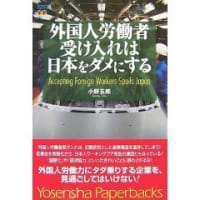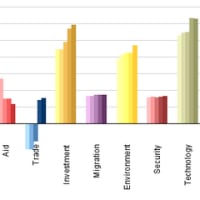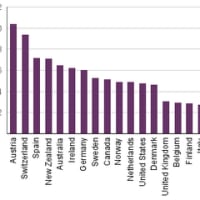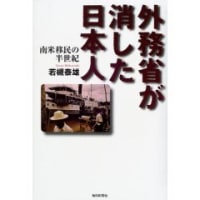海外で居住・就労するフィリピン人が本国に送る仕送り(労働者送金)の伸びが恐ろしいほど堅調で、これが実質、フィリピンの経済を支えているといって差し支えない構図になってきた。
海外出稼ぎ労働者の増加が寄与していることは間違いないが、それに加えて、より高度の技術をもった労働者の数が増加していること、また家事労働者などについても、より賃金の高い国への出稼ぎが増えていることなどが上げられている。
しかしながら、残された家族が不況や災害などにより、更に多くの資金を必要としているのからではないか、フィリピン人裕福層が海外の銀行口座や投資ポートフォリオなどを解約したためのただの資金流入でなはいかなどという反論・憶測もある。
私がフィリピンに赴任しきて既に20ヶ月ほどになるが、送金額が前月比でマイナスになったことは一度もない。
金融危機と出稼ぎについてはこちらも参照ください。
BSP sees OFW remittance growth of 6% in January By Lawrence Agcaoili (The Philippine Star) Updated March 14, 2010 12:00 AM
MANILA, Philippines - The Bangko Sentral ng Pilipinas (BSP) believes that the amount of money sent home by Filipinos from abroad in January grew by more than the full year growth target of six percent due to high demand for skilled Filipino workers abroad.
BSP Governor Amando M. Tetangco Jr. told reporters Friday that overseas Filipino workers’ remittances likely grew faster in January than the full-year growth of six percent based on preliminary data.
“This year we are projecting six percent for the whole year, but for the initial data I have seen, it looks like the figure for January could be in excess of the projection for the year,” Tetangco stressed.
The BSP sees OFW remittances growing by six percent to a new record level of about $18.1 billion this year.
Last year, remittances went up by 5.4 percent to a new record level of $17.348 billion last year from $16.426 billion and exceeded the revised four percent growth forecast set by the central bank due to the sustained demand for skilled Filipino workers overseas particularly engineers, medical practitioners, and teachers.
This, after the money sent home by overseas Filipinos surged by 11.4 percent to hit a new monthly record high of $1.567 billion in December 2009 from $1.407 billion in December 2008.
The amount eclipsed the previous monthly record high of $1.531 billion registered last October.
Major sources of remittances last year included the US, Canada, Saudi Arabia, United Kingdom, Japan, Singapore, United Arab Emirates, Italy, and Germany.
The remittance level accounted for about 10.8 percent of the country’s gross domestic product (GDP) that expanded by 0.9 percent last year from 3.8 percent in 2008.
The stronger-than-expected growth could also be traced to the decision of the government to conduct bilateral talks with host countries that continue to open up new employment opportunities abroad for Filipinos and to facilitate the hiring of displaced workers who were affected by the global economic difficulties.
Authorities also cited the continued expansion of remittance transfer facilities that has helped capture a large share of the global remittance market.
Commercial banks’ established tie-ups, remittance centers, correspondent banks, and branches or representative offices abroad increased to 4,192 as of 2009 from 3,015 as of 2008.
Data from the Philippine Overseas Employment Administration (POEA) showed that the government processed about 41.6 percent or 221,548 of the total job orders that reached 532,214 last year. These jobs comprised mainly of service, production as well as professional, technical, and related job categories in Saudi Arabia, Qatar, UAE, Kuwait, and Hong Kong.
The POEA reported that Middle East countries particularly Saudi Arabia continue to absorb a significant number of deployed OFWs including those that have been displaced elsewhere.
The BSP was originally looking at a zero growth last year but later revised the outlook to a growth of four percent due to the steady deployment of Filipino workers abroad and the increase access to formal remittance channels.
OFW remittances are expected to grow faster at six percent next year especially with the signing of a memorandum of agreement between the BSP and member banks of the Association of Bank Remittance Officers Inc. (ABROI).
The agreement calls for the use of the central bank’s Philippine Payments and Settlements Systems (PhilPaSS) to send the remitted money to the beneficiaries’ accounts in other banks.
OFW families are expected to save at least P92 million to as high as P922 million due to the faster and cheaper delivery of remittances to the beneficiaries at a lower rate of P50 per transaction instead of the current range of between P100 and P550 per transaction.
View previous articles from this author.
海外出稼ぎ労働者の増加が寄与していることは間違いないが、それに加えて、より高度の技術をもった労働者の数が増加していること、また家事労働者などについても、より賃金の高い国への出稼ぎが増えていることなどが上げられている。
しかしながら、残された家族が不況や災害などにより、更に多くの資金を必要としているのからではないか、フィリピン人裕福層が海外の銀行口座や投資ポートフォリオなどを解約したためのただの資金流入でなはいかなどという反論・憶測もある。
私がフィリピンに赴任しきて既に20ヶ月ほどになるが、送金額が前月比でマイナスになったことは一度もない。
金融危機と出稼ぎについてはこちらも参照ください。
BSP sees OFW remittance growth of 6% in January By Lawrence Agcaoili (The Philippine Star) Updated March 14, 2010 12:00 AM
MANILA, Philippines - The Bangko Sentral ng Pilipinas (BSP) believes that the amount of money sent home by Filipinos from abroad in January grew by more than the full year growth target of six percent due to high demand for skilled Filipino workers abroad.
BSP Governor Amando M. Tetangco Jr. told reporters Friday that overseas Filipino workers’ remittances likely grew faster in January than the full-year growth of six percent based on preliminary data.
“This year we are projecting six percent for the whole year, but for the initial data I have seen, it looks like the figure for January could be in excess of the projection for the year,” Tetangco stressed.
The BSP sees OFW remittances growing by six percent to a new record level of about $18.1 billion this year.
Last year, remittances went up by 5.4 percent to a new record level of $17.348 billion last year from $16.426 billion and exceeded the revised four percent growth forecast set by the central bank due to the sustained demand for skilled Filipino workers overseas particularly engineers, medical practitioners, and teachers.
This, after the money sent home by overseas Filipinos surged by 11.4 percent to hit a new monthly record high of $1.567 billion in December 2009 from $1.407 billion in December 2008.
The amount eclipsed the previous monthly record high of $1.531 billion registered last October.
Major sources of remittances last year included the US, Canada, Saudi Arabia, United Kingdom, Japan, Singapore, United Arab Emirates, Italy, and Germany.
The remittance level accounted for about 10.8 percent of the country’s gross domestic product (GDP) that expanded by 0.9 percent last year from 3.8 percent in 2008.
The stronger-than-expected growth could also be traced to the decision of the government to conduct bilateral talks with host countries that continue to open up new employment opportunities abroad for Filipinos and to facilitate the hiring of displaced workers who were affected by the global economic difficulties.
Authorities also cited the continued expansion of remittance transfer facilities that has helped capture a large share of the global remittance market.
Commercial banks’ established tie-ups, remittance centers, correspondent banks, and branches or representative offices abroad increased to 4,192 as of 2009 from 3,015 as of 2008.
Data from the Philippine Overseas Employment Administration (POEA) showed that the government processed about 41.6 percent or 221,548 of the total job orders that reached 532,214 last year. These jobs comprised mainly of service, production as well as professional, technical, and related job categories in Saudi Arabia, Qatar, UAE, Kuwait, and Hong Kong.
The POEA reported that Middle East countries particularly Saudi Arabia continue to absorb a significant number of deployed OFWs including those that have been displaced elsewhere.
The BSP was originally looking at a zero growth last year but later revised the outlook to a growth of four percent due to the steady deployment of Filipino workers abroad and the increase access to formal remittance channels.
OFW remittances are expected to grow faster at six percent next year especially with the signing of a memorandum of agreement between the BSP and member banks of the Association of Bank Remittance Officers Inc. (ABROI).
The agreement calls for the use of the central bank’s Philippine Payments and Settlements Systems (PhilPaSS) to send the remitted money to the beneficiaries’ accounts in other banks.
OFW families are expected to save at least P92 million to as high as P922 million due to the faster and cheaper delivery of remittances to the beneficiaries at a lower rate of P50 per transaction instead of the current range of between P100 and P550 per transaction.
View previous articles from this author.
















